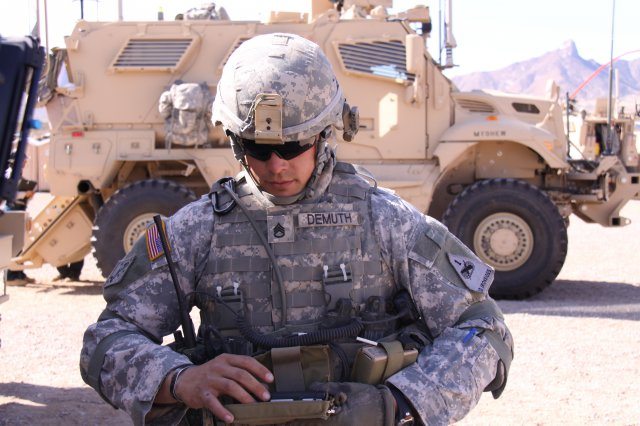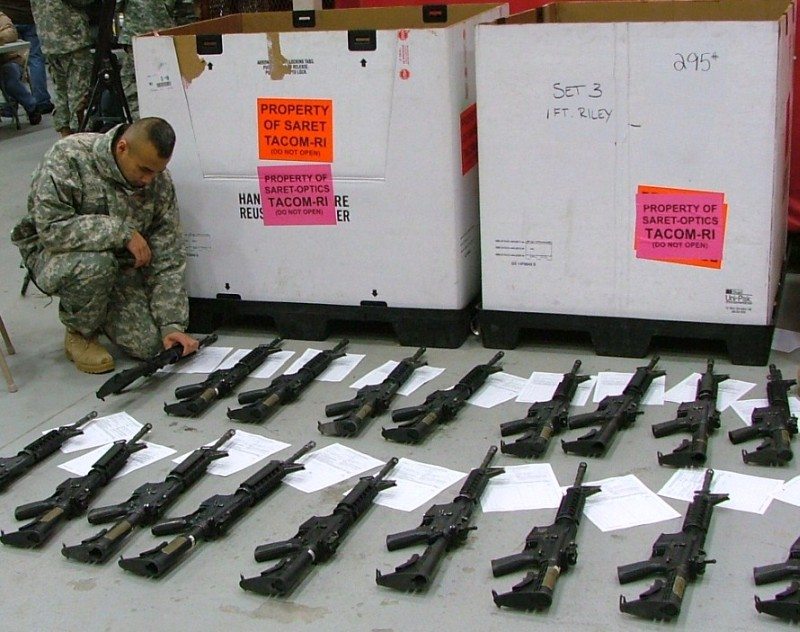As the Army gears up to field its first integrated package of tactical communications equipment to deploying Soldiers, the service is already partnering with industry to enhance those technologies for the next capability set.
Through the Network Integration Evaluations, or NIE, the Army has established an integrated network baseline that connects all echelons of the brigade combat team from the static tactical operations center to the commander on-the-move to the dismounted Soldier. That baseline is composed of radios, satellite systems, software applications, smartphone-like devices and other network components that together form Capability Set 13, which will be fielded starting in October.
Now the Army is working to enhance that baseline by filling remaining capability gaps. For the October NIE 13.1 and spring 2013 NIE 13.2, which will focus on solidifying Capability Set 14 for fielding beginning in 2014, the Army will evaluate solutions from government and industry that meet more specific criteria than in the first three exercises.
The NIE is a series of semi-annual, Soldier-driven field evaluations designed to further integrate and mature the Army’s tactical network, and accelerate and improve the way network technologies are delivered to Soldiers.
The solutions to be evaluated at NIEs 13.1 and 13.2 include candidate systems submitted in response to the Army’s “sources sought” notices, as well as systems that were carried over from the previous NIEs. During NIE evaluations, these “carryover” systems were found to have potential but require additional refinement; as a result, the Army provided companies the opportunity to incorporate the Soldier feedback and then participate in a subsequent NIE for continued assessment.
“After three NIEs, the Army has a better understanding of industry’s core competencies in developing technologies that can incrementally improve the network and we are targeting those specific competencies as we move into NIE 13.1 and 13.2,” said Brig. Gen. Daniel Hughes, director of Army System of Systems Integration. “The partnership between government and industry in contributing technologies to the NIE has put the Army on a solid path to more targeted upgrades, allowing us to quickly integrate emerging capabilities into the Capability Set 14 baseline.”
The identified gaps for NIE 13.1 are: multi-channel tactical radio; mission command on the move; low-cost, low-size, weight and power tactical cross domain solution; joint participation capability, U.S. and allies; aviation extension; small form factor, modular transit case satellite communications terminal and baseband; mission command in-garrison training; and improved operational energy.
The identified gaps for NIE 13.2 are: enhanced command post collaboration and visualization; company information architecture; network operations visualized in the command post; aerial layer network – air ground integration; integrated employment of LandWarNet installation and training resources; Warfighter Information Network-Tactical interoperable satellite communications and ground to ground capability on heavy brigade combat team maneuver platforms. Another gap focused on operational energy will be released in the coming weeks.
With the more targeted gaps and the increase in carryover systems, the Army received fewer submissions for NIE 13.2 than for previous sources sought notices. However, the service expects to see another increase for NIE 14.1, when it will use a Request for Proposal solicitation, in addition to sources sought notices, as a formal mechanism to procure technologies that succeed at NIE.
The service is also finalizing a plan to incorporate successful industry systems into Army materiel portfolios by aligning them with existing Programs of Record. To date, the Army has spent approximately $250 million to facilitate industry participation in the NIE, and to procure systems out of the NIE to support Capability Set fielding. The Army now maintains a dedicated pool of funding for NIE support and will maintain funding for procurement of promising capabilities out of the NIE.
“The NIE and Agile Process are still evolving, but there is no doubt that they have dramatically improved coordination and partnership between the Army and industry,” Hughes said. “Industry partners are receiving specific network needs and technical standards to better focus their efforts, and we look forward to seeing their continued innovation.”











